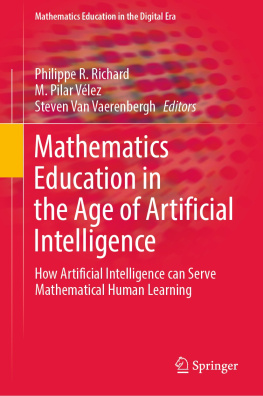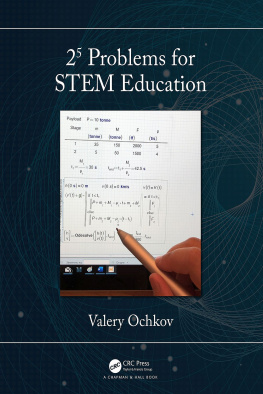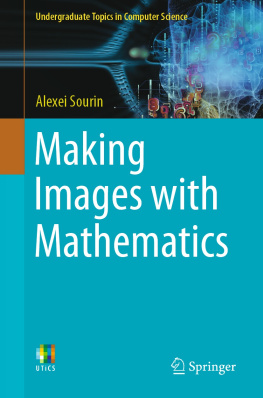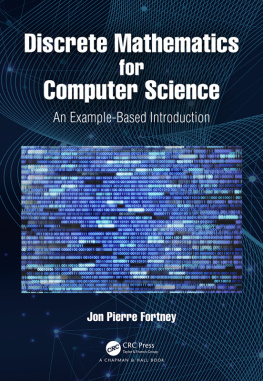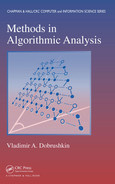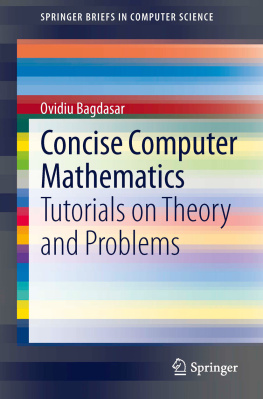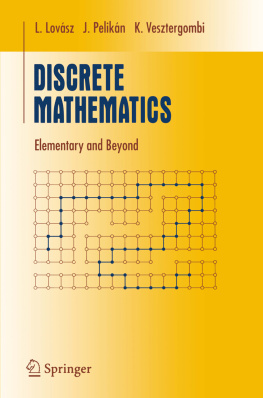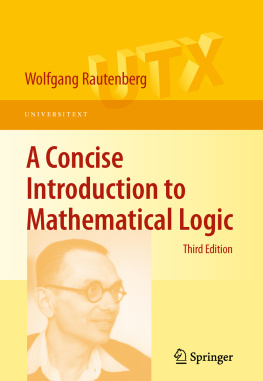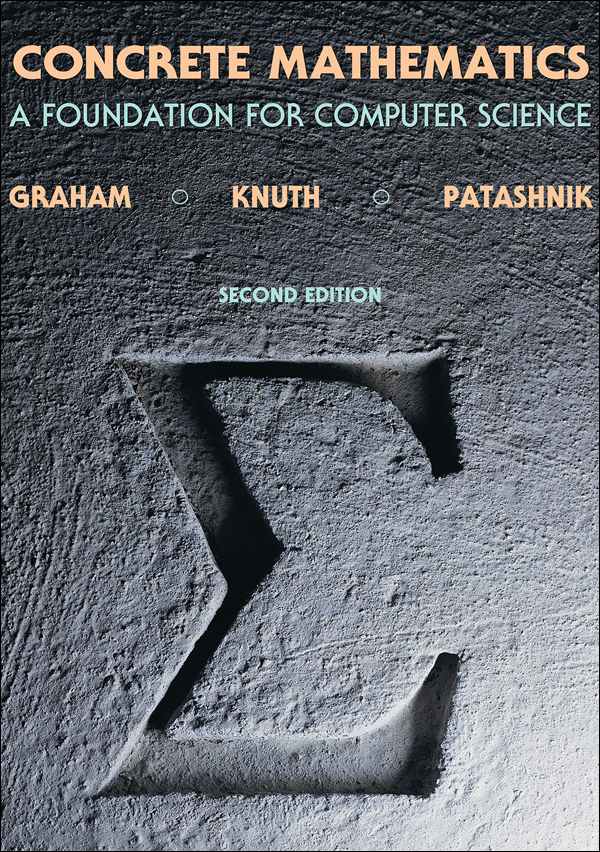Ronald Graham - Concrete Mathematics: A Foundation for Computer Science
Here you can read online Ronald Graham - Concrete Mathematics: A Foundation for Computer Science full text of the book (entire story) in english for free. Download pdf and epub, get meaning, cover and reviews about this ebook. year: 1994, publisher: Addison-Wesley Professional, genre: Science. Description of the work, (preface) as well as reviews are available. Best literature library LitArk.com created for fans of good reading and offers a wide selection of genres:
Romance novel
Science fiction
Adventure
Detective
Science
History
Home and family
Prose
Art
Politics
Computer
Non-fiction
Religion
Business
Children
Humor
Choose a favorite category and find really read worthwhile books. Enjoy immersion in the world of imagination, feel the emotions of the characters or learn something new for yourself, make an fascinating discovery.

- Book:Concrete Mathematics: A Foundation for Computer Science
- Author:
- Publisher:Addison-Wesley Professional
- Genre:
- Year:1994
- Rating:3 / 5
- Favourites:Add to favourites
- Your mark:
Concrete Mathematics: A Foundation for Computer Science: summary, description and annotation
We offer to read an annotation, description, summary or preface (depends on what the author of the book "Concrete Mathematics: A Foundation for Computer Science" wrote himself). If you haven't found the necessary information about the book — write in the comments, we will try to find it.
This book introduces the mathematics that supports advanced computer programming and the analysis of algorithms. The primary aim of its well-known authors is to provide a solid and relevant base of mathematical skills - the skills needed to solve complex problems, to evaluate horrendous sums, and to discover subtle patterns in data. It is an indispensable text and reference not only for computer scientists - the authors themselves rely heavily on it! - but for serious users of mathematics in virtually every discipline.
Concrete Mathematics is a blending of CONtinuous and disCRETE mathematics. More concretely, the authors explain, it is the controlled manipulation of mathematical formulas, using a collection of techniques for solving problems. The subject matter is primarily an expansion of the Mathematical Preliminaries section in Knuths classic Art of Computer Programming, but the style of presentation is more leisurely, and individual topics are covered more deeply. Several new topics have been added, and the most significant ideas have been traced to their historical roots. The book includes more than 500 exercises, divided into six categories. Complete answers are provided for all exercises, except research problems, making the book particularly valuable for self-study.
Major topics include:
- Sums
- Recurrences
- Integer functions
- Elementary number theory
- Binomial coefficients
- Generating functions
- Discrete probability
- Asymptotic methods
This second edition includes important new material about mechanical summation. In response to the widespread use of the first edition as a reference book, the bibliography and index have also been expanded, and additional nontrivial improvements can be found on almost every page. Readers will appreciate the informal style of Concrete Mathematics. Particularly enjoyable are the marginal graffiti contributed by students who have taken courses based on this material. The authors want to convey not only the importance of the techniques presented, but some of the fun in learning and using them.
Ronald Graham: author's other books
Who wrote Concrete Mathematics: A Foundation for Computer Science? Find out the surname, the name of the author of the book and a list of all author's works by series.

